It is the wish of every doctor to save the world and save the wounds. It is also an important factor for each patient's wish and early recovery. However, due to the shortage of medical resources and the uneven proportion of doctors and patients, many patients are not effectively diagnosed and treated in time. At the same time, the lengthy and inefficient crowding in the hospital also made the demands of both doctors and patients unsatisfied.
As the next wave of technology, artificial intelligence brings new technologies and productivity to medical treatment, especially medical detection, bringing new impetus to the fully loaded medical system. The addition of AI not only brings the simplest diagnosis and treatment technology to every corner that technology can reach, but also provides timely technical supplements for areas with shortage of medical resources. It will also liberate doctors from heavy labor and become doctors. Powerful assistants enable them to devote their wisdom and energy to difficult diagnosis and disease research. The two cases in this paper introduce the computer vision-based method to detect skin cancer and cataract, transform the doctor's experience into the recognition technology of AI algorithm, and detect it more efficiently and accurately.
Diagnosing skin cancer with AI
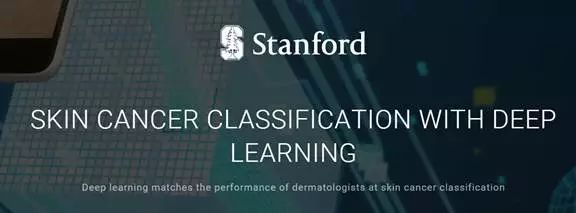
A research team at Stanford University has proposed a new method for diagnosing the probability of skin cancer based on skin images. Although this is not the first algorithm to automatically identify skin lesions, it is by far the most stable and reliable with the help of deep learning. Methods!
Skin disease research experts find this to be a very exciting thing, computer recognition and detection can reach the level of human experts, which means that the detection efficiency in this segment can be greatly improved. The purpose of this research is to provide accurate and efficient medical services for everyone who owns a smartphone. Andre Esteva, who participated in the study, said that such technology can expand the scope of existing medical services and alleviate the shortage of medical resources.
The model was first pre-trained with ImageNet data. The researchers then used the current largest skin cancer classification dataset (including 2000 medical records into 130,000 lesions) to further adjust the model, and finally obtained a neural network that can detect whether the skin image contained in the input skin contains skin cancer. model.
In a comparative study, the algorithm was compared to the diagnostic results of 21 certified dermatologists. They need to judge from hundreds of dermatological case images that have never been seen before, which are in need of further diagnosis and which are benign. The end result shows that the performance of computers and experts is indistinguishable. For example, computers can be as accurate as doctors to distinguish keratinocyte cancer, the most common human skin cancer, and what is called seborrheic keratosis. Benign hyperplasia of the skin. But this project needs to withstand even more severe tests before it is actually used for clinical diagnosis. The researchers said that the algorithm has not yet been able to distinguish between the indistinguishable seborrheic keratosis and melanoma."
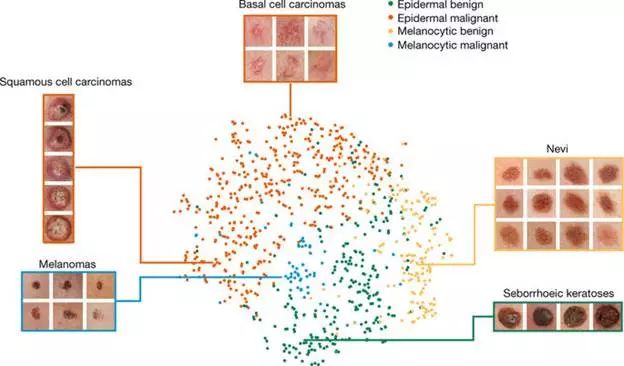
The dermatologist's diagnosis of the condition is based entirely on visual information. It is unclear whether computers can perform as well as doctors in the clinical environment. Clinically, they can perform physical examination of the lesions, read the patient's medical history, and also diagnose the patient's condition by touch.
"If this algorithm can be proven effective, it will be a huge disruption to the medical community. Most medical systems are people who do not need a doctor's face. If the computer can successfully cope with these cases, the doctor can make the doctor more efficient and efficient. The face of the patient is in need," Leachman said.
This technology can also be integrated into mobile apps, allowing for convenient skin cancer detection with a smartphone:
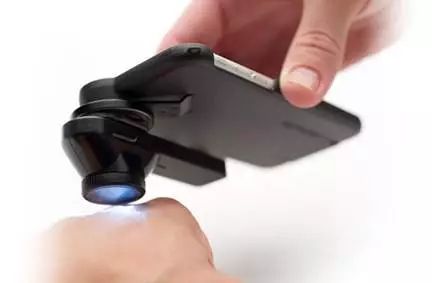
Really bring cutting-edge technology to everyone who needs it
Although it is possible that not all dermatologists welcome artificial intelligence into their field, there will be some people who are afraid of machines taking their jobs, and many people are skeptical about the power of computers, especially for online ones that are not stable enough. Diagnostic application software. On the other hand, there are doctors who believe that the application of new technology will give them time to explore more advanced areas, leave time for more intractable diseases, and leave efficiency to more people who need help and treatment. Let us spend time and experience on unresolved issues and leave what we know about algorithms to the computer.
Use AI to detect cataracts and help patients see the light again
Since AI can be used in the diagnosis of skin cancer, is it also the detection of medical images that can be handled by AI? AI-based image detection technology can solve the diagnostic problems of those in the shortage of medical staff, and the researchers turned their attention to the widespread diagnosis of cataract.
In the former remote areas, cataracts (including children's congenital cataracts, leading to blindness) can only be completed by doctors in the countryside, the frequency and coverage are not enough, and patients often fail to timely diagnose the best treatment opportunities.
Haotian Lin, an ophthalmologist from Sun Yat-Sen University, and colleagues hope to use AI to solve this problem and send more accurate and convenient eye examination techniques to more people. But when they solve this problem they face a problem that needs to be solved - data!
We all know that data is important for deep learning systems and as important for neural networks as rocket fuel. If the data is strong enough, we are likely to be able to solve specific problems through the training network. But can deep learning still achieve good results under limited data conditions?
A study by DeepMind inspired the researchers' ideas, which demonstrated how machine learning algorithms can begin learning with limited information (minimized initial information) and defeat professional human players in a series of arcade games. Inspired by this research, Haotian Lin and his colleagues came up with a new idea to create an AI that can mine children's cataract data from clinical databases.
Working with a team of professors from Xi'an University of Electronic Science and Technology, Xiyang Liu, they created an AI project called CC-Cruise that diagnoses congenital cataracts, predicts the severity of the disease, and gives treatment recommendations. CC-Cruise trains on the data mentioned earlier.
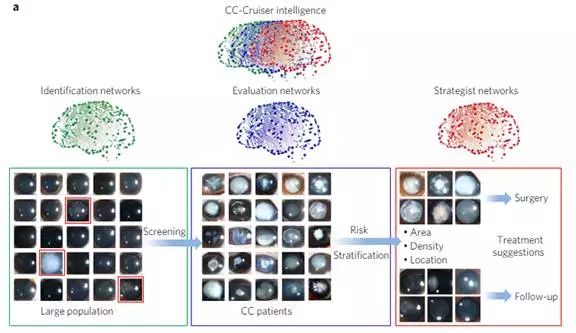
Three kinds of data
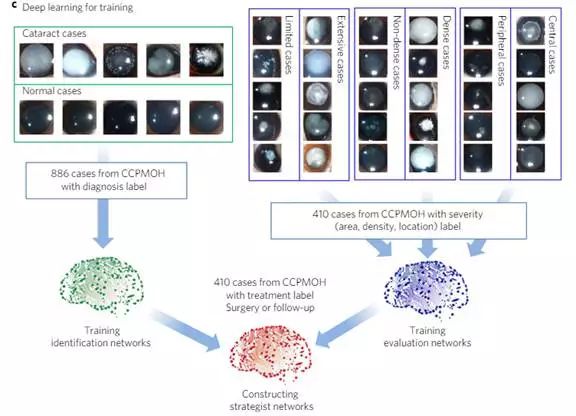
Training process
The researchers did five tests to verify the accuracy of the CC-Cruiser. For the first time, under computer simulated medical conditions, this AI project can distinguish between patients and healthy adults with an accuracy rate of 98.87%, and three indicators for estimating the severity of the disease with an accuracy of more than 93% - lens opacity Region, density and location, with appropriate treatment recommendations at 97.56% accuracy.
The research team hopes that the platform will eventually help hospitals without ophthalmologists to diagnose cataracts, so the second time they collaborated with three hospitals with less developed medical conditions, and performed an image of 57 eye images from Chinese children. Clinical Trials. The test results showed that CC-Cruiser also performed well: 98.25% of the recognition accuracy, more than 92% of the three indicators and 92.86% of the treatment recommendations.
In addition, the researchers hoped to study the impact of low-quality eye disease images on CC-Cruiser diagnostic results, so they conducted a third experimental test. They randomly downloaded 53 eye disease images from the Internet and tested them with CC-Cruiser, which still achieved high accuracy. But the researchers didn't stop testing for this. The fourth time they conducted three "hay needles" tests, the algorithm successfully found three cataract images from 300 normal eye images each time.
Finally, in order to simulate real-world use, they directly asked the algorithm to clinically diagnose 50 patients with three physicians: ophthalmologists, experienced ophthalmologists, and inexperienced ophthalmologists. The results showed that computers and experts The level is comparable.
In this test, perhaps the reason for the insufficient number of training images, the algorithm did appear a few times misdiagnosis, so Dr. Lin hopes to build a larger data set to improve its performance. They plan to build a collaborative cloud platform to achieve this goal, but Lin emphasizes that this technology does not guarantee the best treatment for 100% correctness. Doctors should make full use of the machine's recommendations to supplement their own judgments to identify and prevent Potential misdiagnosis.
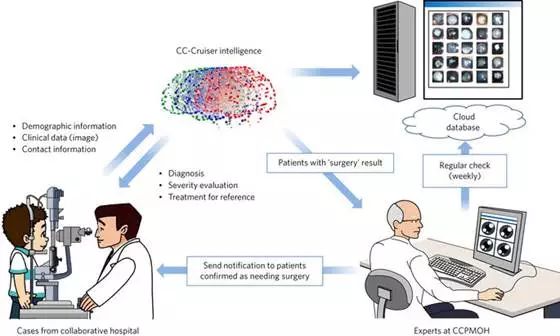
Automated inspection process
Therefore, CC-Cruiser cannot quickly replace an ophthalmologist. Lin said, “especially on a key technology – people-to-people communication and effective interaction, which is indispensable in treatment, it is very challenging for machines to simulate human emotions. Doctors and patients Face-to-face interaction will be the last bastion of human wisdom." The research team hopes that through further clinical trials, non-specialty hospitals can use this algorithm to determine the condition and then send the patient to a specialist treatment center. The patient can also choose to have the algorithm to diagnose for himself. If there is any doubt about the diagnosis, go to the expert. Lin added: "The ultimate goal of artificial intelligence is to use it in combination with human capabilities to make the world a better place. â€
Transparent Led Film Screen P10
With dozens of professional R&D engineers with more than 20 years of experience in the PCB soft film industry as the core, the development of new products is ensured; with dozens of engineers with excellent quality and craftsmanship as the backbone, the product process and quality are ensured. Since its establishment, the business department has followed the business philosophy of "market-oriented, quality-focused, cost-based, and innovation-driven", and the line of self-developed characteristic products. barrier.
Transparent Led Film Screen P10,Led Display Screen P10,Led Display Module Screen P10,Curtain Led Display Transparent Screen
Guangdong Rayee Optoelectronic Technology Co.,Ltd. , https://www.rayeeled.com